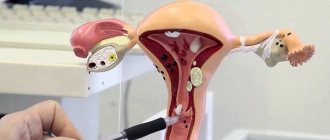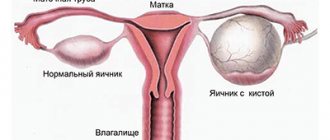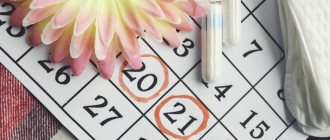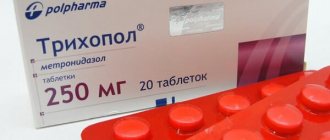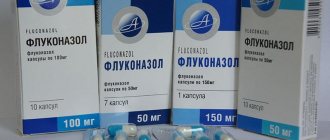Basic definition of disease
The disease occurs and proceeds without obvious symptoms. A cyst appears at the site of a mature but not burst follicle, at the site where a mature egg is released. The reason for this development may be:
- hormonal disbalance;
- abortion;
- infectious diseases;
- chronic inflammation of the appendages;
- disturbances in the functioning of the endocrine system;
- genetics;
- injuries and heavy physical activity;
- poor nutrition;
- stress.
The size of the cyst varies on average from 1 to 9 cm. There have been cases when cysts reached 15-20 cm in diameter. The cyst may disappear on its own. Sometimes professional medical help is needed for treatment. Recovery is a fairly long process and requires following your doctor’s recommendations.
What exercises are prohibited if you have an ovarian cyst?
If the neoplasm is small in size and does not manifest itself in any way, then there are no restrictions on exercises. However, it is important not to overwork. If the size of the cyst is large, then you should definitely avoid doing the following exercises:
- Sharp body tilts.
- Jumping.
- Swinging movements of the lower limbs.
- Sharp attacks.
- Squats.
- Exercises for the abdominal muscles.
- Lifting weights.
- Intense running.
Ovarian cyst and sports
Playing sports has a number of advantages for the human body: strengthening all muscles, burning fat, improving the respiratory and cardiovascular systems, blood circulation, and normalizing metabolism. If an ovarian tumor is detected, you should ask your doctor what to rule out during treatment. A cyst and sports will not bring danger with a competent approach. The main criterion when choosing physical exercises is the type of neoplasm and the degree of complexity.
If a neoplasm occurs due to an inflammatory process, physical activity should be completely avoided until complete recovery. After your body recovers, start with low-intensity exercise and gradually increase the pace. What exercises lead to cyst rupture:
- Load on the oblique and rectus abdominis muscles.
- Raising the torso and legs from a horizontal position.
With polycystic ovary syndrome, there are many cysts of small diameter. In this type of disease, training is a mandatory part of treatment. The classes are aimed at reducing the patient’s weight, which complicates treatment. When getting rid of extra pounds, hormonal levels are normalized, and therapy gives positive results faster. Recommended exercises:
- Walking. If heavy physical exercise is prohibited, race walking is prescribed. It improves the emotional state and restores body tone. There are a lot of special gadgets (pedometers, sports bracelets) that help monitor your heart rate and the number of kilometers traveled.
- Easy running. This sport is recommended. Intense jogging can negatively affect the course of the disease. Possible pain in the lower abdomen, cramps, even rupture of cysts.
- Physiotherapy. All exercises are prescribed based on the severity and type of disease. The main focus is on restoring and strengthening the muscles of the pelvis and peritoneum. This could be light gymnastics, training on exercise machines with light weights.
The exercises can be used in combination. Consult your doctor. All loads are assigned strictly individually.
Sports activities
It is known that a sports lifestyle is beneficial for a woman’s health. Exercise improves the functioning of the respiratory as well as the cardiovascular system. Exercising also leads to the following results:
- Improving blood circulation in all organs;
- Establishing metabolism;
- Strengthening muscles;
- Burning fat tissue.
Despite the list of beneficial properties, the choice of suitable physical activities must be taken seriously. The degree of complexity and type of cyst plays a decisive role in this.
If the formation occurs due to an inflammatory process, then physical education must be completely eliminated in order to avoid possible complications. You can resume physical activity only after completing a full course of rehabilitation therapy. You need to start the exercises small, gradually increasing the load.
It is important to remember that some exercises can worsen the condition of the pathological formation. Undesirable exercises include:
- Press load. Raising the torso or legs from a lying position;
- Tension with force of the oblique and rectus abdominal muscles.
Only light forms of physical activity are allowed.
Exercises that lead to complications of the disease
If a woman has a small tumor, she can play sports of any intensity. Don't overwork your body. If you have a large ovarian cyst, do not perform the following exercises:
- fast run;
- sudden lunges, bends;
- lifting weights, dumbbells;
- pump up the press;
- squats with weights;
- jumping.
Exercise can lead to hospitalization even with a normal follicular cyst, which usually goes away on its own. A rupture can be caused by somersaults, falls, or any sudden movements of the body. You should not neglect the advice of doctors if you have an ovarian cyst.
Women's diseases. Causes and treatment
Today, women go to the gynecologist more often than to the hairdresser. Removing the ovaries has become as commonplace as removing the appendix. Women's diseases not only bring a lot of discomfort and pain, but also create conditions for the degradation of the offspring. This article will tell you about the true causes of the most common female diseases and methods of treating them. I think there is no need to convince you that official medicine shows its inconsistency and uselessness here too. No matter how many times you go to the gynecologist, you won’t get any better. In laboratories, monkeys are trained to consciously press buttons. If you pressed the red button you got a banana, and if you pressed the white button you got an orange. The monkeys don’t think about how this mechanism works and why different fruits fall out, but they press the buttons with excitement. Likewise, doctors from official medicine, like monkeys, look where it hurts. And they don’t even think about trying to find the root cause.
We digress, now let's get back to the main topic.
General external symptoms of female diseases (gynecology):
1. Nagging pain in the lower abdomen. 2. Vaginal discharge. 3. Painful periods 4. Soreness and swelling in the center of the chin. 5. Soreness of the periosteum of the pubic bone. 6. Loss of voice. 7. Pain at RP point 6 San Yin Jiao (see. drawing)
8.Pain in the L5-S1 area (lumbosacral junction) and in the sacral area.
Let's look at each disease separately (it will be more convenient for you), although many of them have the same roots.
Ovarian cyst
The most sensitive part of a woman’s abdomen to impaired blood supply is the ovaries. The ovaries are fed by the artery a.ovarica. Most often, the blockage of this particular artery disrupts the functioning of the ovary. The cause of ovarian disease in women is exclusively mechanical. Those. the tone of nearby tissues or organs is disrupted, this leads to disruption of the blood supply to the ovaries and to their disease. Let's look at why this happens:
1. The functioning of the intestines (large or small) is disrupted; this causes bloating or displacement. Such intestines lead to compression of neighboring tissues and arteries. In turn, intestinal dysfunction can be caused by liver and gallbladder diseases. Therefore, before treating the ovaries, you need to determine whether everything is okay with the intestines, gall bladder and liver.
2. Postoperative scars on the abdomen cause adhesions and displacement of tissues or organs. For example, appendectomy scars can cause problems in the right ovary. 3. Biomechanical problems such as scoliosis or sacroiliac joint (SIJ) dysfunction. Hypertonic muscles and fascia stretch tissues and internal organs. 4. Injuries to the sacrum and coccyx can disrupt the innervation of the pelvic organs, including the ovaries. Injuries during childbirth can also cause ovarian diseases. 5. Kidney prolapse. How to treat an ovarian cyst? If you do not want to be left without an ovary(s), then visceral therapy will best help. By using the services of a good visceral therapist, you will get a quick and guaranteed result. If you have enough wisdom and willpower, then yoga and herbal medicine are suitable for you. The yoga complex must include Badha Konasana (see picture) and sun salutations. Most often, ovarian diseases are accompanied by problems in the mammary glands.
Diseases of the uterus. Myoma.
The reasons may be the same as for ovarian cysts, but the following can also be added: 1. Frequent venereological diseases caused by promiscuity.
2.Kidney diseases, cystitis.
It is with uterine fibroids that a painful swelling is observed in the center of the chin. Very often women have uterine hypertonicity. During pregnancy, this may lead to miscarriage or the baby may not be properly engorged. For normal diligence, you need to stretch your buttocks. Also, hypertonicity of the uterus can be removed by massaging the very painful RP6 point of San Yin Jiao for two minutes on each leg. Its pain will be a confirmation of uterine hypertonicity. However, many acupuncture textbooks strictly prohibit working with the RP6 point during pregnancy. I think this is a misconception. This point should not be toned or cauterized during pregnancy. But it is possible and even necessary to sedate (knead). I was convinced of this in practice. More than once he saved women from miscarriage. Treatment of the uterus is the same as for ovarian diseases.
Dear women, I would like to draw your attention to the following interesting facts. In my practice, I have often met women over 40 who had most of their female organs removed. These women were victims of idiotic doctors and their own ignorance. They tried to save themselves from cancer, but cutting out organs will not save them from this. Almost all women with colon cancer have their female organs removed. Well, what next? Will you cut out the intestines? After removal of the uterus, coxarthrosis of the hip joints develops very quickly. You are saved from death, but you doom yourself to the torment caused by the consequences of such operations. But you can stay with the organs. Healthy organs.
During childbirth, uterine atony may be observed. This occurs due to compression of the pelvic diaphragm. The body is smart, it knows that increasing tone can injure the child. Idiot doctors inject oxytocin in this case. But it is enough to raise the tailbone and the pelvic diaphragm will relax, allowing the fetus to pass through the birth canal without hindrance. When oxytocin is injected, the child will be between a rock and a hard place. This increases the likelihood of injury. But the midwife’s grandmother knew all these subtleties. Therefore, I believe that it is necessary to revive the institute of midwives in Russia and Belarus. Or retrain obstetricians.
Painful periods
The cause is most often kidney disease. Namely, their prolapse, urolithiasis or renal failure. Painful periods are observed in women with vegetative-vascular dystonia, which also occurs due to the kidneys. There is another reason for painful periods - blood stagnation caused by liver diseases. By the way, in healthy women, periods should always begin close to the full moon. Sometimes in my practice there are incidents. Concerned patients call after a course of treatment and ask why their periods have shifted. I ask when my period was and it turns out that the new cycle after treatment coincides with the full moon.
Cellulite
Women, do you really think that special tights, ointments, diets, and anti-cellulite massage will save you from cellulite? Come on. You don’t understand at all the cause of this unpleasant illness. And the reason is a violation of biomechanics and visceral problems. Cellulite can occur after trauma during childbirth or due to prolapse of internal organs, or due to atony of the pelvic diaphragm. There are a few more “or”s. Here you need to be treated by a specialist. Systematic yoga classes can also get rid of cellulite. During childbirth, the hormone progesterone softens the pelvic tissues and after that these tissues need to be returned to normal. Otherwise, chronic muscle imbalances will develop. With the descent of organs, etc. Strengthening the pelvic floor after childbirth can be done with the help of vaginal balls. Or special exercises (see yoga section) I did not touch on the topic of thrush, trichomoniasis, mastopathy, etc. I just don't want to repeat myself. Because the reasons are still the same. And treatment methods too. After all, pathogenic microflora does not live in healthy organs that are normally supplied with blood and with normal innervation.
Author: Grigory Krolivets.
www.bymed.ru
Sports activities for the treatment of ovarian cysts
Doctors have found that the cause of tumors in the reproductive system of the female body is blood stagnation. The reason is a sedentary, sedentary lifestyle. To avoid this, introduce regular, light exercise into your life. The body will be in healthy physical shape. Basic exercises to prevent blood stagnation in the pelvic organs:
- Alternately inflating and retracting the abdominal muscles. At this time, blood is forced out of the organs, replaced by renewed blood. Blood is pumped throughout the body;
- With the first exercise, it is advisable to perform breathing exercises. As you inhale, inflate your stomach, and as you exit, draw it in. Perform 5 to 8 sets of exercises per day. In addition to accelerating the resorption of the cyst, burning belly fat is considered a plus.
The advantage of exercise is that you can do it even at work. For cystic formations, massage is contraindicated. In some cases, therapeutic vaginal massage and entire complexes are prescribed. For those who do stretching, it is worth eliminating all sudden movements. They should be smooth and measured.
Traditional methods
Folk remedies for combating ovarian cysts are effective only against functional formations; they cannot cope with dermoid or mucinous tumors.
In addition, alternative medicine is only an addition to the main therapy; it is not capable of treating pathology on its own.
To treat ovarian cysts at home, various decoctions, mixtures for tampons, tinctures, and homeopathy are used. Particularly popular are plants such as hogweed, celandine and walnut.
Homeopathy
Homeopathic treatment of ovarian cysts with folk remedies is aimed at eliminating the cause that caused the development of the tumor and stabilizing the entire body.
The drug is selected individually, taking into account the characteristics of each individual case:
- Apis - approved for use during pregnancy, affects the functioning of the ovaries.
- Aurum Iodine is most effective for treating cysts that are accompanied by uterine fibroids.
- Metallicum is prescribed to patients suffering from hypertension.
Tinctures
Treatment of ovarian cysts without surgery is possible with the help of tinctures. Alcohol tincture of raisins has a good therapeutic effect.
To prepare it, you need to take half a kilo of dried berries and pour 500 ml of high-quality vodka over them, set the mixture in a dark place for 15-20 days.
Take the medicine three times a day, 15 g before meals for 21 days, then be sure to take a break for 3-5 days. You can repeat the 21-day intake until the cyst disappears.
You can also use acacia flowers; they are prepared in the same way as raisin tincture. If the flowers are fresh, you will need 500 g, if dried - 300 g.
You need to take acacia according to a special regimen: on the first day, 1 tbsp. spoon three times, on the second - 1.5 spoons three times, the third day - 2 spoons of tincture 5 times during the day, then a one-day break.
To achieve a therapeutic effect, the cycle is repeated at least 5-7 times.
Tampons
Tampons are a local procedure that every woman can do on her own. The course of treatment usually lasts several months.
Important! During the period of menstrual flow, a break is taken, since the use of tampons is inappropriate. Gauze soaked in the medicinal mixture is inserted into the vagina and left overnight.
For the best effect, it is advisable to sleep on the side on which the affected ovary is located.
Juice is squeezed out of fresh nettle leaves, then tampons are dipped in it and inserted into the vagina. Treatment can be continued for up to 4-5 months.
You need to mix fresh aloe and onion juice in equal parts, soak a tampon with the mixture, and insert it into the vagina. The procedure must be carried out every other day, otherwise irreparable damage to the internal epithelium can be caused.
If during the procedure a woman feels discomfort or a burning sensation, then the gauze should be immediately removed and the vagina should be rinsed thoroughly with slightly warm water. It is not advisable to repeat such treatment.
Hog queen
Borovaya uterus is not only a remedy for cysts of the appendages, the plant helps against various diseases of the female sphere. It has a pronounced antitumor and analgesic effect, and also stimulates the body's defenses.
To prepare the medicine, you need to take 15 g of the dry plant, pour it into a thermos and pour 200 ml of boiling water. Infuse in a warm place for 5-7 hours, after the time has elapsed, strain.
Take 4-5 times a day, the course of treatment is 30 days, there is no need to take a break for menstruation.
Celandine
To prepare a remedy from celandine, you need to take the juice of the plant, liquid honey and an alcohol tincture of propolis.
Mix all ingredients in equal proportions and achieve a uniform consistency. The medicine can be stored in a cool place for no more than a month.
The course of treatment is 30 days; to achieve the effect, you need to eat a teaspoon of the mixture every morning. It is important to do this on an empty stomach.
Laparoscopy and exercises
If proper nutrition and prescribed sports training do not give the desired result, then surgical intervention is required - laparoscopy. The distinctive feature of laparoscopy is the puncture of the abdominal cavity, rather than an incision. The cavity is filled with carbon dioxide, and a laparoscope equipped with a camera is inserted into the puncture. The entire operation lasts on average 1 hour, sometimes longer. After the procedure, the patient is allowed to move and walk after a few hours. There are cases when after a day you can already sit, and walk on the third day.
After surgery, a woman is often discharged within a few days. Sutures are removed 2-3 weeks after surgery. The patient should significantly limit her physical activity. It is forbidden to lift heavy things, play sports, and avoid sexual intercourse. All activities that cause tension in the abdominal muscles should be avoided.
General information
Cystic formations have different etiologies. The causes and symptoms of cysts can be very diverse. The pathological process, depending on the root cause and the individual characteristics of the body, can be asymptomatic or with pronounced symptoms. Regarding etiology, the neoplasms are of follicular origin. They are formed at the site of a follicle that has not burst or upon the release of a mature egg ready for fertilization. Reasons contributing to the appearance of ovarian cysts:
- hormonal imbalance, endocrine pathologies;
- wrong lifestyle;
- inflammation in the organ and other body systems;
- uncontrolled use of hormonal drugs;
- abortions, frequent termination of pregnancy;
- frequent stress;
- blood stagnation in the pelvis;
- gynecological pathologies, genital, viral, bacterial infections;
- excess weight, physical inactivity;
- errors in nutrition;
- excessive intense physical activity.
The clinical picture depends on the severity of the process, age, the presence of secondary, concomitant pathologies, diseases, and other factors. Treatment of tumors on the cyst requires long-term complex therapy and rapid recovery is possible only if all recommendations of the attending physician are followed. Therefore, let’s consider the possibility of playing sports and the effect of physical activity on the cyst.
Recovery after surgery
The key to successful completion of the operation is proper recovery. Doctors recommend starting with race walking, small distances, and gradually increasing the mileage. For quick recovery after surgery, the following exercises are recommended:
- Gymnastics of the respiratory system.
- Walking simulation. Being horizontal, it is necessary to slide your heels along the surface. Perform this exercise 2-3 approaches per day.
- Smooth turns of the body (not earlier than a few hours after surgery, only after permission from the attending physician).
- Exercises in a sitting position.
- Walking (you can add steps later).
Perform all sports exercises after consultation with your doctor, under the close attention of a trainer. After performing the first exercise, the doctor will be able to adjust the load system to eliminate unpleasant consequences. After 3-4 weeks, it is possible to return to your previous lifestyle and sports activities. All loads should be gradual, start with swimming. If you experience unpleasant, sharp, aching pain in the lower abdomen, stop exercising immediately and consult your doctor.
Yoga for the treatment of polycystic ovary syndrome: tips and tricks
To properly understand the effectiveness of an unconventional treatment method, it is necessary to find out the effect of the complex on the general condition of the body. The word “yoga” itself, translated from Sanskrit, means “union, unity” and implies the unity of the three principles of human essence - physical, mental, spiritual. Polycystic ovary syndrome begins with systemic disorders, that is, it is based on an imbalance of the neuroendocrine system. Treatment of polycystic ovary syndrome with yoga - restoring balance using natural forces, without the help of a scalpel and synthetic drugs.
Complete relief from the disease is possible only if the root causes are completely eradicated:
- disruption of the pancreas is determined by excess insulin and cell immunity to it;
- disruptions in the activity of the adrenal glands - the result of an increased level of androgens;
- high levels of estrogen in the blood are a consequence of poor-quality secretion of the genital organs;
- dysfunction of the pituitary gland - a disorder in the chain “ovaries - pituitary gland - hypothalamus”.
Science has not found out the exact cause of the pathology, but studies have proven the relationship between frequent stress and hormonal imbalances in the body. Therefore, treating polycystic disease with yoga is the right decision on the path to harmony of body and spirit.
Treatment of polycystic ovary syndrome with yoga is absolutely safe and has no contraindications, but it takes a long time. To achieve results, you need to gain endurance for at least six months. It is also worth remembering that the treatment of polycystic ovary syndrome with yoga is not an independent method, but a method used in complex therapy.
Treatment of polycystic ovary syndrome with yoga: mechanism of action
Hormonal imbalance occurs due to more active production of male hormones, which prevents regular ovulation. Treatment of polycystic ovary syndrome with yoga - normalization of metabolic processes:
- asanas (sitting positions) and pranayama (breathing practice that allows you to control vital energy - prana) equalize hormonal balance;
- exercise lowers the level of insulin and cortisol (an indicator of stress) in the blood;
- the interaction of endocrine organs (thyroid, adrenal glands, parts of the brain and gonads) improves.
Patients who practice yoga note an improvement in their well-being soon after starting classes and are better able to tolerate treatment for polycystic ovary syndrome.
Treatment of polycystic ovary syndrome with yoga: simple poses
Asanas designed exclusively to eliminate female dysfunctions help promote deep relaxation and relieve accumulated stress. They work the body in a more subtle range than recommended sports and dietary nutrition. Treatment of polycystic ovary syndrome with yoga consists of several complexes based on simple positions:
Butterfly (Baddha Konasana) - Sit on the floor, bend your knees and touch your heels. Spread your knees to the sides, trying to touch the floor with them. Keep your back straight. If your build doesn’t allow you to touch the floor with your knees, don’t try too hard, try to maintain the pose for as long as possible.
Supta Baddha Konasana - similar to a “butterfly”, but lying on your back. If lying in the butterfly position is difficult, place a small pillow under your lower back. Treatment of polycystic ovary syndrome with yoga relieves tension in the pelvic area, improves blood circulation, normalizes brain activity and lowers cortisol in the blood.
Bharadvajasana - body twisting. Turn your body to the left, sitting on your knees, placing your feet to the right of your pelvis. The right palm lies on the left knee, the left hand behind the back at waist level.
Chakki Chalana - sitting on the mat, spread your legs straight, arms extended in front of you in a lock. After a deep breath, slowly rotate your body in a circle. The asana massages the insides (genital areas, liver, kidneys and pancreas). Exercise relieves pain during menstruation, normalizes the cycle, and gets rid of fat in the waist area. Yoga treatment for polycystic ovary syndrome involves slowly and thoroughly working through each stance. Movements are measured and leisurely.
Cobra (Bhujangasana) and Bow (Dhanurasana) - performed lying on the stomach. For the first asana, straighten up, arms in front of you, palms on the mat, shoulder-width apart. Bend back as much as possible and fix the position. Dhanurasana is more difficult - also lying on your stomach, bend back and clasp your ankles with your palms. Treatment of polycystic ovary syndrome with yoga with these poses proceeds through improving the secretion of the adrenal glands and pancreas, burning excess fat and normalizing the functioning of the gastrointestinal tract.
Shavasana is a deep relaxation, “corpse pose” that completes each complex.
Set aside 20-30 minutes a day for yourself: treating polycystic ovary syndrome with yoga is pleasant and beneficial for the whole body.
Only comprehensive treatment of polycystic ovary syndrome with yoga and other techniques will help get rid of this dangerous pathology. Yoga has established itself as an auxiliary method, which is unwise to neglect. Nature provides humans with powerful tools for solving problems; it is important to be able to use them.
medbooking.com
Yoga as a disease prevention
Yoga has long entered the lives of not only the eastern inhabitants of the planet. The main goal of treatment with yoga is to improve blood circulation in the pelvic organs, combat blood stagnation, and prevent diseases of the reproductive system. Yoga perfectly keeps the body in good shape and energizes you not only physically, but also emotionally.
Yoga is not a treatment, it is a complement to therapy. If the doctor has confirmed the presence of a cyst in the ovary, then you should refrain from active breathing, strength exercises, as well as all movements aimed at blood flow to the abdominal area. The best option would be sitting exercises, leaning on the wall. Listen to how your body feels, therapy should bring relief, not pain.
With an endometrioid cyst, pain during yoga is provoked by excessive blood overflow into the body tissues. Choose exercises that will be aimed at eliminating stagnation of venous blood.
If there is stagnation of blood in the pelvis, weak functioning of the ovaries, or insufficient synthesis of hormones, it is worth performing this exercise. You need to lie face down, legs extended, toes together or shoulder width apart. Place your hands near your head, palms down. Bend your back back, pull your head further away, but do not lift your stomach off the floor. You need to stay in this position for as long as possible.
For adhesions and ovarian cysts, you need to lie on your stomach, bend your knees, put your hands along your body, and make a fist. First, lift one leg and focus on your hands. Then repeat for the second leg. Exercise helps in resolving the cyst and will also help get rid of adhesions in the tubes.
When diagnosed with an ovarian cyst, do not despair and become depressed. Proper nutrition, regular physical activity, good emotional state are the key to health.
Is it possible to have sex with an ovary: advice from doctors
Previous article
What not to do with an ovarian cyst
Next article
For polycystic disease
Polycystic ovary syndrome is multiple formation of small cysts. With this diagnosis, exercise is part of complex therapy, as well as a way to get rid of excess weight. The pathological process is difficult to treat if the patient is overweight. In addition, extra pounds are one of the causes of anovulation and increased insulin levels in the blood.
Regular physical exercise combined with diet leads to positive results. If you have a cyst, the following physical exercises are recommended:
- Easy running. Jogging with intense exercise can cause sharp pain and cramps in the lower abdomen;
- Exercise therapy. An integral part of medical therapy is often prescribed by a doctor. It may include exercises with varying degrees of load. For example, light gymnastics or exercise on a simulator. During specially designed exercises, the muscles of the abdominal and pelvic region are developed, and the function of diseased organs is restored;
- Walking. If intense exercise is contraindicated, then race walking may be a good alternative. This type of health support is absolutely safe. With its help, the spine is strengthened, overall tone and mood are increased. The pedometer will allow you to adjust the load level according to the shape of the cystic formation.
Before you start playing sports, you need to agree on the type of exercises and their level of difficulty with a specialist. Appointments are completely individual.
Contraindications for training with pathological formations on the ovaries
Despite all the benefits of training, physical activity, and the fact that a healthy lifestyle and activity are often part of the complex treatment of ovarian cysts, especially with polycystic disease, some types of exercise are strictly contraindicated for women who have been diagnosed with this pathology.
Important! Strength sports, intense systematic strength loads can cause the growth of cysts, provoke rupture of organ tissue (apoplexy), and other complications.
For all types of cysts on the ovaries, it is not recommended to: pump up the abs; run long distances; exercise with dumbbells; make sharp lunges forward, do the splits; bend over, lift weights of more than 2 kilograms; do any exercises that involve raising your legs while lying down.
Exercises in the gym, strength training that strengthen the oblique and rectus abdominis muscles, intense squats, vigorous leg swings, jumping, splits, and other stretching exercises are contraindicated. Accidental falls, heavy lifting, somersaults, frequent excessive stress and activity, any sports that involve the abdominal muscle structures can lead to intensive growth and rupture of cystic formations. Doctors recommend completely avoiding sports with ovarian cysts if the tumors appear against the background of an inflammatory process. You can visit the gym, fitness, or aerobics only after completing the treatment course, of course, if there are no medicinal contraindications. Increase the intensity and duration of classes gradually.
If you have cystic neoplasms, you should also not visit a spa, solarium, take hot baths, or subject the body to strong, too intense physical activity. Some salon, physiotherapeutic and cosmetic procedures are contraindicated.
Yoga
Yoga classes are recommended by doctors to women as a preventive measure for diseases of the reproductive system. Asanas normalize the psycho-emotional state, saturate the body with energy, improve the functioning of the cardiac, respiratory, and endocrine systems, and increase the body’s resistance.
Taking into account the various techniques and types of yoga, you can choose the optimal practices that are suitable for a particular period of life (pregnancy, menstruation, menopause). When performing asanas, one exercise is performed only once. Start with 4-8 minutes, increasing the time interval for performing each exercise. Don't overexert yourself, listen to your feelings. If you feel slightly tired, take a break. The transition between asanas should be smooth. It is best to do yoga in the morning or evening until 20.30.
Systematic training and sports are an effective means of preventing gynecological female diseases and other systemic pathologies. But if a pathological neoplasm is diagnosed on the gonads, systematic loads have not only a beneficial, but also a negative effect. That is why, before visiting the gym or playing sports, consult your doctor. Is it possible to play sports with an ovarian cyst, and what exercises will be useful at each stage of this pathology, your doctor will tell you. Follow all medical prescriptions, do not self-medicate, do not use questionable methods of alternative medicine, and be attentive to your health.
What sports and exercises are not contraindicated for cysts on the ovary
If there are no contraindications, playing sports and doing physical exercises is possible and necessary. In this case, the loads should be minimal and the classes should be short. In particular, physical activity and exercise therapy are indicated for those who are overweight, as well as for those with polycystic disease. Physical education, light aerobics, fitness must be combined with proper nutrition, adherence to a regime and daily routine. Dosed, properly organized workouts help restore the body and improve blood flow in the pelvis.
Important! When choosing what sports to engage in and what exercises can be done for this pathology, take into account the level of physical fitness and severity? stage of the pathological process.
Safe Exercises
- Exercise therapy (physical therapy). Light (moderate) physical activity can be prescribed to patients by a doctor in addition to the main treatment. Light gymnastics and minimal activity reduce the risk of complications and shorten the recovery period. You need to do simple exercises systematically, without missing classes.
- Fast intense walking. Since fast running and marathon races are contraindicated in the presence of cystic formations in the ovaries, since they can provoke muscle spasms and acute pain syndrome, race walking is allowed and even recommended. To avoid overdoing it, use a pedometer.
- Easy running. If there are no contraindications, a slow, calm run is recommended. Patients are allowed short morning jogs. Vary your pace. In case of discomfort and pain, replace running with sports or brisk walking.
Important! If the pathological formation is small in size, fast walking, smooth squats (no more than 10-15 times per set), stretching, and running in place at a calm pace are allowed. Movements should be unhurried and smooth. Take a break for a few minutes between sets.
You can safely alternate and combine various exercises with each other. Increase the load gradually, constantly listen to your body. If classes with weights and dumbbells are allowed, it is recommended to take a weight of no more than 1.5-2 kg.
One of the effective exercises for the presence of cysts on the ovary is inflating and retracting the abdomen. This technique is also indicated after surgery, but as soon as the rehabilitation period is over. It speeds up the rehabilitation period by improving blood supply to the pelvic organs and accelerating metabolism. As you inhale, pull your stomach in, and as you exhale, inflate. Choose a comfortable body position that is comfortable for you.
The first times will be difficult, but you will get used to it, get into the rhythm, and adapt. This technique also helps to quickly get rid of excess weight and fat deposits on the peritoneum. Do 20-25 exercises in three to four minutes. For greater effect, repeat this exercise six to nine times a day. If you feel unwell or experience any discomfort or symptoms, please contact the clinic. The specialist will select an individual program, the optimal, suitable level of stress.
